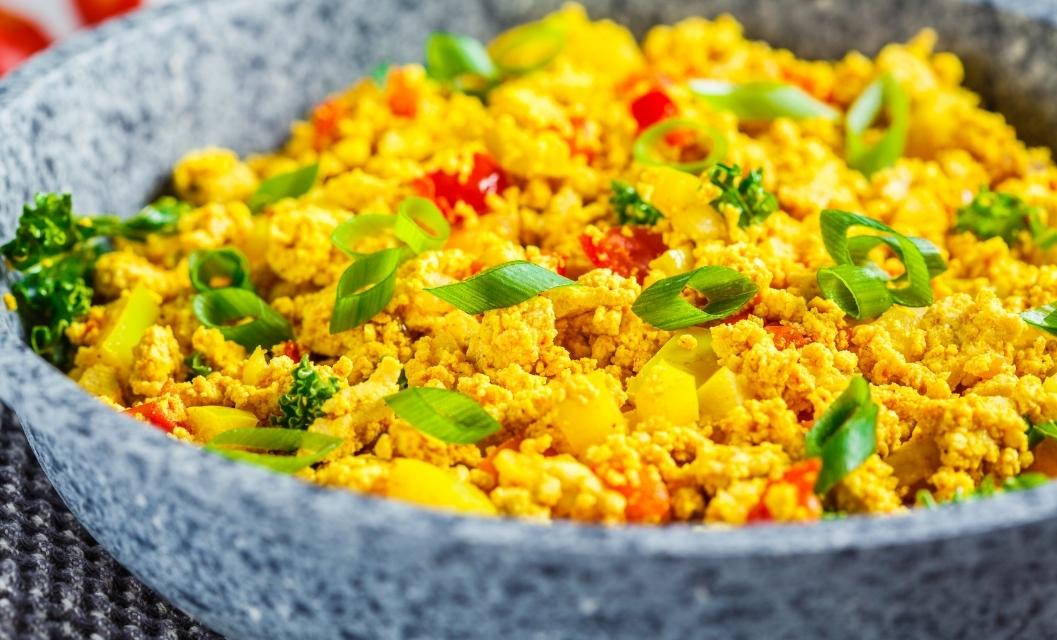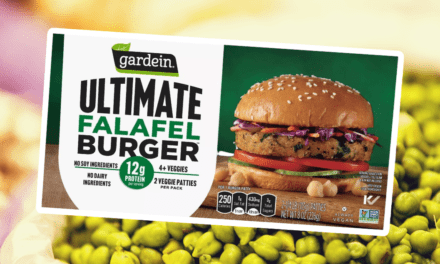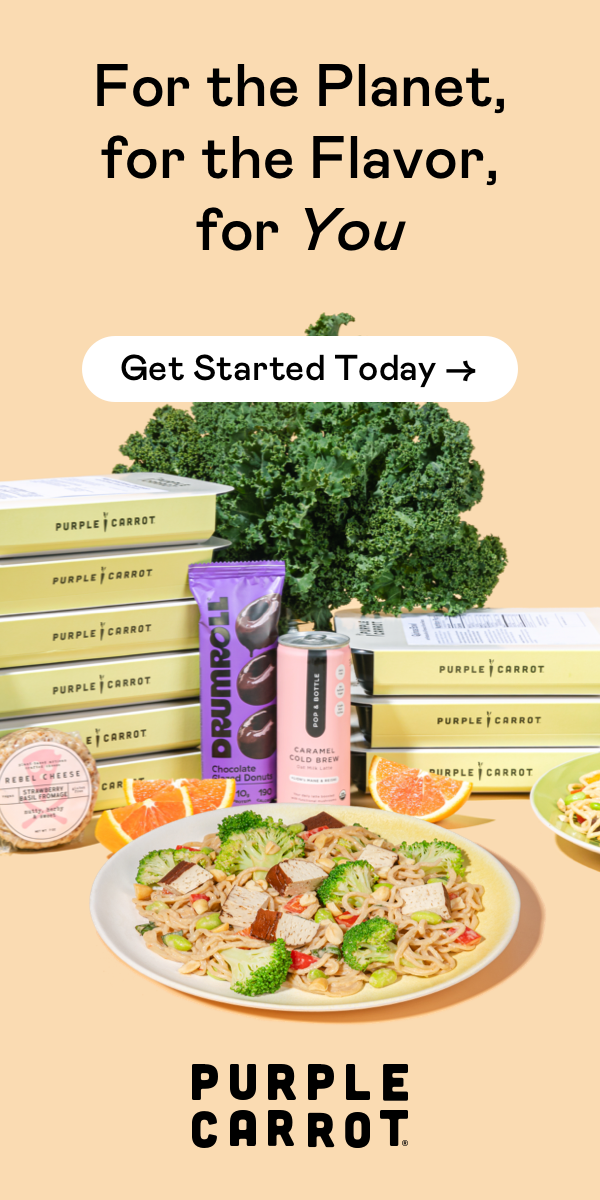If you’re looking to add a bit more flavor to your plant-based meals, you’re in luck. Umami is a delicious and savory flavor that can be added to any dish. Below are a few tips on how to add umami to your next vegan meal, as well as some top vegan foods that have umami.
What is umami, and why should vegans care about it?
If you’ve ever savored a dish and felt like it was missing something, chances are it was umami. Umami is one of the five basic tastes (along with sweet, sour, bitter, and salty), and it’s often described as being “savory” or “meaty.” It’s a Japanese word that translates into “pleasant savory taste”. It’s a complex flavor to describe, but once you experience it, you will know what we mean!
Umami is produced by amino acids and nucleotides, which are found in animal products like meat, fish, and cheese. However, there are also plant-based sources of umami, like mushrooms, tomatoes, and soy sauce. For vegans, finding ways to add umami to their dishes is essential for creating both flavorful and satisfying meals.
So why does umami matter?
First of all, it can help to round out the flavor of a dish. If a dish tastes flat or one-dimensional, adding a bit of umami can give it more depth and complexity. Umami can also help to boost other flavors; for example, if a dish is too sour or bitter, adding some umami can help to balance it out. Finally, umami is simply delicious! When used judiciously, it can take a dish from good to great.
How can you add more umami to your vegan dishes?
One of the most common ways to add flavor to vegan dishes is with umami-rich ingredients. Below are some of the best vegan foods with umami flavor.
Miso paste
Miso paste is a vegan pantry staple that adds an umami boost to all kinds of dishes. Whether you’re using it to make a quick soup or marinade, miso paste is a delicious way to add depth of flavor to your cooking. But what exactly is miso paste, and what gives it its characteristic umami flavor?
Miso paste is made from fermented soybeans, which are rich in the amino acid glutamate. Glutamate is responsible for the umami flavor. When fermentation breaks down the soybean proteins, it releases more glutamate, giving miso paste its distinct savory flavor.
So, if you want to add a little umami to your cooking, don’t forget the miso paste! It’s a vegan-friendly ingredient that will take your dishes to the next level.
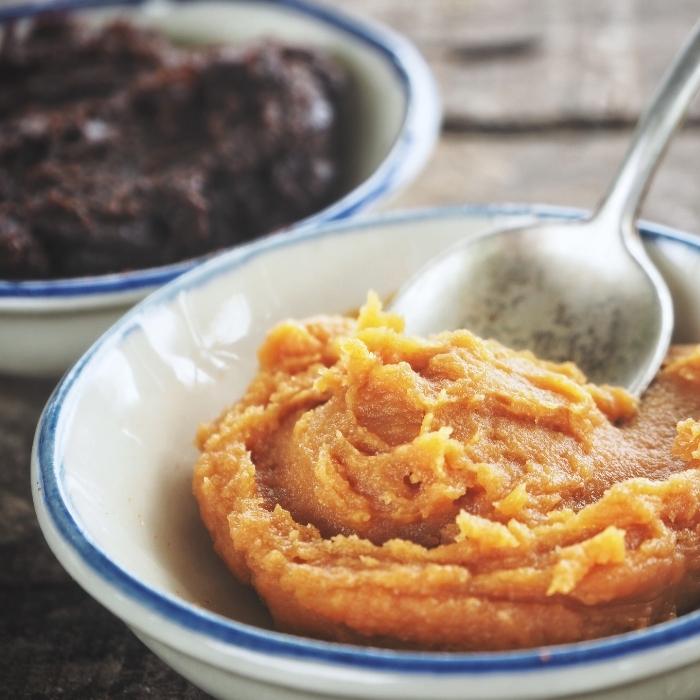
Adding a little miso paste to your vegan cooking will give it plenty of umami and depth of flavor.
Tomatoes
Although tomatoes are often thought of as being sweet, they actually contain a fair amount of umami. The umami in tomatoes comes from glutamic acid, which is found in high concentrations in tomatoes. In addition, tomatoes contain other umami-rich compounds, including inosinate and guanylate. These compounds work together to amplify the tomato’s natural savoriness. As a result, tomatoes and tomato paste are full of umami flavor. So the next time you’re looking for a boost of flavor in your vegan cooking, reach for some tomato paste. You’ll be surprised at how much it enhances the taste of your food.
Fermented foods
Fermented foods are foods that have been through a process of fermentation, in which bacteria or yeast break down the carbohydrates and proteins in the food. Not only are fermented foods packed with nutrients, but they also have a delicious umami flavor that can elevate any dish.
Various plant-based fermented foods have umami, including miso, tamari, and tempeh (all soy-based foods). If you’re soy-free and looking to add fermented foods to your vegan cooking, try using fermented vegetables instead!
In addition to being delicious, fermented vegetables are also a great source of probiotics, which can support gut health. So why do fermented veggies have umami? The answer lies in the fermentation process itself. During fermentation, the vegetables release amino acids contributing to their savory taste. In addition, the fermentation process breaks down the vegetables’ cell walls, making them more easily accessible and boosting their flavor.
So next time you’re looking for a flavorful addition to add to your vegan cooking, reach for some fermented veggies!
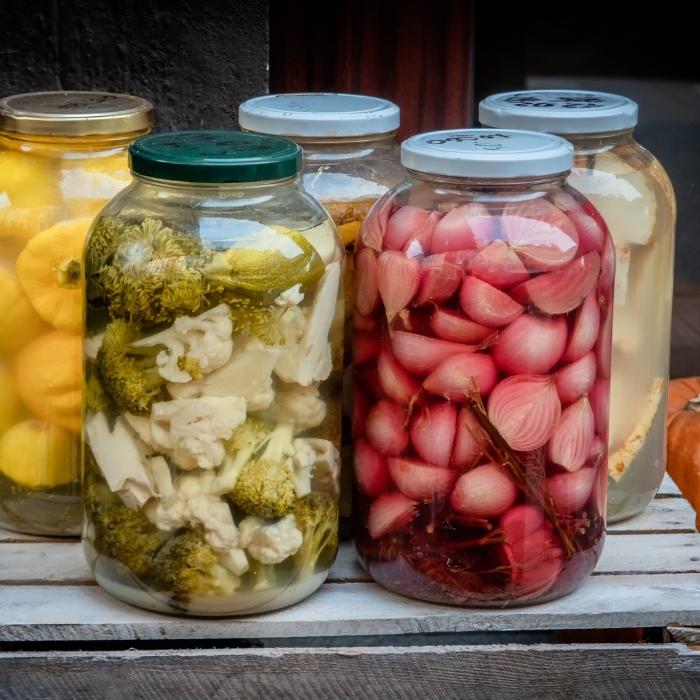
Fermented vegetables add umami and probiotics to your vegan meals.
Seaweed
Seaweed is another vegan-friendly ingredient that’s rich in umami. It’s a type of algae that grows in the ocean and is often used as a seasoning or wrapping for sushi. Seaweed is a good source of glutamic acid, which is responsible for its savory taste. In addition, seaweed also contains other umami-rich compounds, including inosinate and guanylate. These compounds work together to amplify the seaweed’s natural savoriness.
If you’re looking for a delicious way to add umami to your vegan cooking, try using seaweed! It’s a versatile ingredient that can be used in a variety of dishes. And because it’s packed with umami flavor, it’ll help to make your meals even more delicious.
Mushrooms
Mushrooms are a vegan’s best friend. They’re a versatile ingredient that can mimic the taste and texture of meat, making them perfect for plant-based dishes. But what gives mushrooms their unique earthy flavor? It’s all thanks to umami. So the next time you’re looking for a delicious vegan meal, reach for some mushrooms to satisfy your cravings.
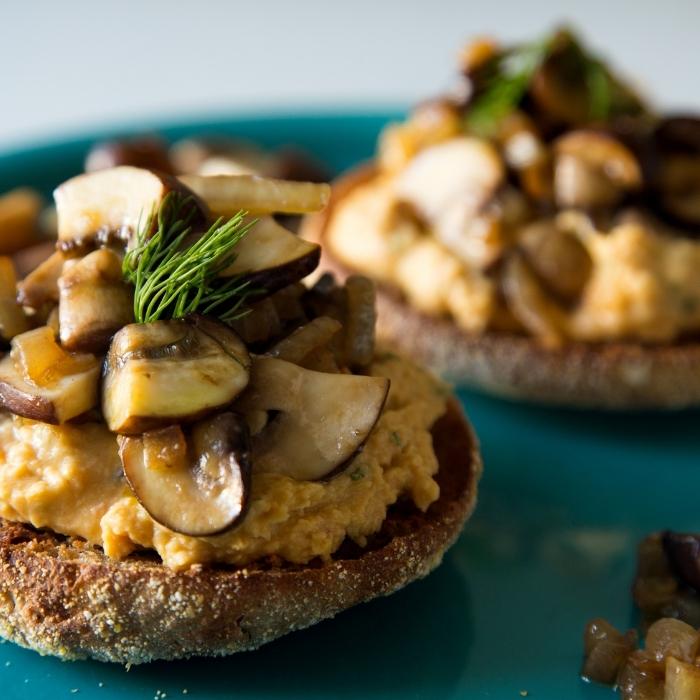
Mushrooms with hummus and dill on an English Muffin.
Soy Sauce
Soy sauce is a staple in many Asian cuisines, and it’s no wonder why. It’s packed with umami flavor and is a great way to add savoriness to any dish. Soy sauce is made from fermented soybeans, which are rich in glutamic acid.
Instead of soy sauce, you could also use tamari. Tamari is the Japanese version of soy sauce, and it’s a little thicker and less salty.
If you need to avoid soy, you could try coconut aminos instead!
Nutritional Yeast
Nutritional yeast is a vegan staple that can be used in all sorts of recipes. It’s an inactive yeast sold in the form of flakes or as a powder, and it has a cheesy, nutty flavor. Nutritional yeast is a good source of B-vitamins, and it’s often fortified with vitamin B12, which is important for vegans since it’s not found in many plant-based foods. You can use nutritional yeast in all kinds of recipes, from vegan mac and cheese to vegan nachos. It’s also great for sprinkling on top of soup or salad. So if you’re looking for a vegan-friendly ingredient that will add some extra umami flavor to your food, nutritional yeast is a great option.
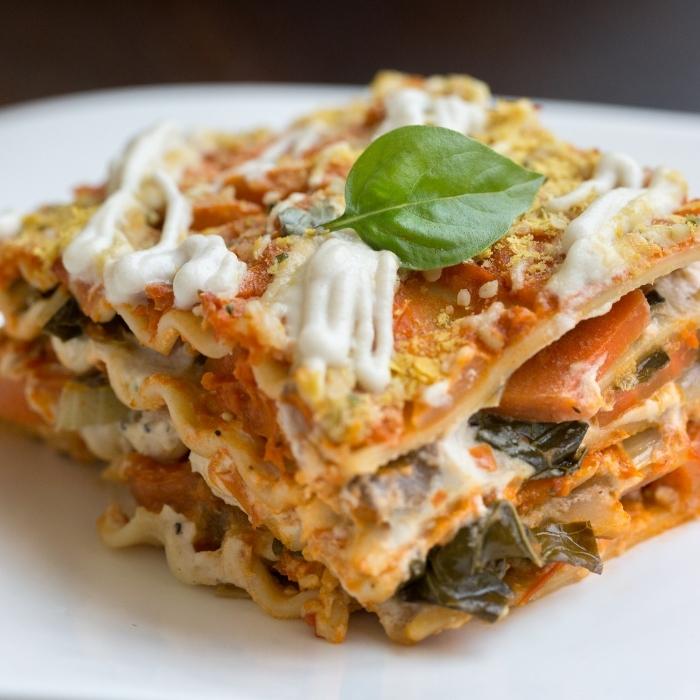
Vegan veggie lasagna with cashew sauce and a sprinkling of nutritional yeast.
Tips for adding umami to vegan cooking
Cooking with umami can be a great way to add depth and flavor to your dishes. Here are a few tips to get the most out of this delicious flavor:
- Use umami as a seasoning, adding it to soups, sauces, and marinades for an extra boost of flavor. You can even purchase “seaweed seasoning” salt that doesn’t taste fishy but adds a salty, savory flavor to your cooking while giving you some naturally occurring iodine!
- Use umami to flavor simple dishes like grains, roasted vegetables, or even tofu scramble. Just add a little bit of miso paste, tamari, or nutritional yeast to enhance the savory flavors.
- Experiment with different ingredient combinations and find new ways to incorporate plant-based umami foods into your vegan cooking repertoire. There are no rules when it comes to cooking with this delicious flavor. So have fun and let your creativity shine!
By following these tips, you can master the art of cooking with umami and take your vegan dishes to the next level!

Nicole
Long time vegan living in upstate NY. Web developer and founder of Vegan ShowOff. She's addicted to ice cream and loves hiking, snowboarding, gardening, and travel. Read more from Nicole!

